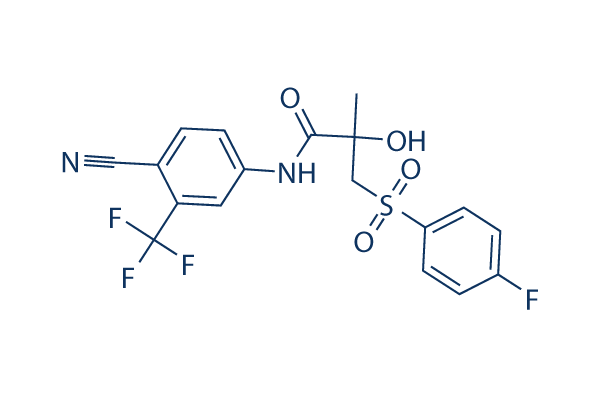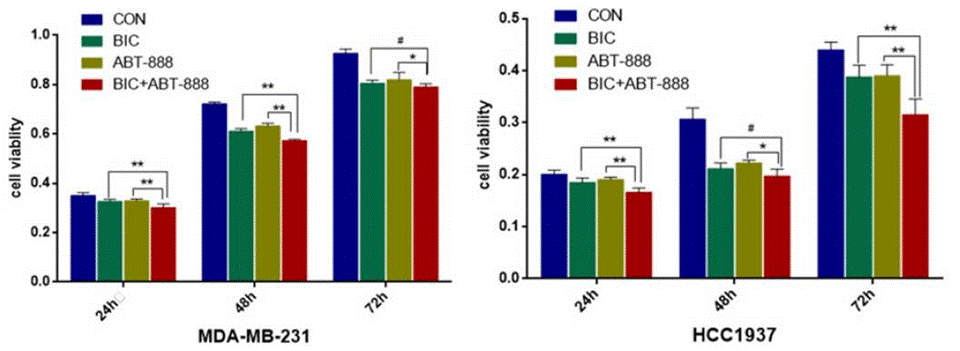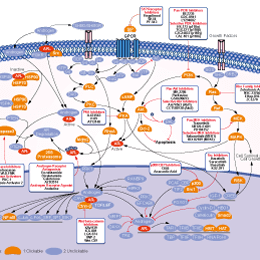
- 阻害剤
- 研究分野別
- PI3K/Akt/mTOR
- Epigenetics
- Methylation
- Immunology & Inflammation
- Protein Tyrosine Kinase
- Angiogenesis
- Apoptosis
- Autophagy
- ER stress & UPR
- JAK/STAT
- MAPK
- Cytoskeletal Signaling
- Cell Cycle
- TGF-beta/Smad
- 化合物ライブラリー
- Popular Compound Libraries
- Customize Library
- Clinical and FDA-approved Related
- Bioactive Compound Libraries
- Inhibitor Related
- Natural Product Related
- Metabolism Related
- Cell Death Related
- By Signaling Pathway
- By Disease
- Anti-infection and Antiviral Related
- Neuronal and Immunology Related
- Fragment and Covalent Related
- FDA-approved Drug Library
- FDA-approved & Passed Phase I Drug Library
- Preclinical/Clinical Compound Library
- Bioactive Compound Library-I
- Bioactive Compound Library-II
- Kinase Inhibitor Library
- Express-Pick Library
- Natural Product Library
- Human Endogenous Metabolite Compound Library
- Alkaloid Compound LibraryNew
- Angiogenesis Related compound Library
- Anti-Aging Compound Library
- Anti-alzheimer Disease Compound Library
- Antibiotics compound Library
- Anti-cancer Compound Library
- Anti-cancer Compound Library-Ⅱ
- Anti-cancer Metabolism Compound Library
- Anti-Cardiovascular Disease Compound Library
- Anti-diabetic Compound Library
- Anti-infection Compound Library
- Antioxidant Compound Library
- Anti-parasitic Compound Library
- Antiviral Compound Library
- Apoptosis Compound Library
- Autophagy Compound Library
- Calcium Channel Blocker LibraryNew
- Cambridge Cancer Compound Library
- Carbohydrate Metabolism Compound LibraryNew
- Cell Cycle compound library
- CNS-Penetrant Compound Library
- Covalent Inhibitor Library
- Cytokine Inhibitor LibraryNew
- Cytoskeletal Signaling Pathway Compound Library
- DNA Damage/DNA Repair compound Library
- Drug-like Compound Library
- Endoplasmic Reticulum Stress Compound Library
- Epigenetics Compound Library
- Exosome Secretion Related Compound LibraryNew
- FDA-approved Anticancer Drug LibraryNew
- Ferroptosis Compound Library
- Flavonoid Compound Library
- Fragment Library
- Glutamine Metabolism Compound Library
- Glycolysis Compound Library
- GPCR Compound Library
- Gut Microbial Metabolite Library
- HIF-1 Signaling Pathway Compound Library
- Highly Selective Inhibitor Library
- Histone modification compound library
- HTS Library for Drug Discovery
- Human Hormone Related Compound LibraryNew
- Human Transcription Factor Compound LibraryNew
- Immunology/Inflammation Compound Library
- Inhibitor Library
- Ion Channel Ligand Library
- JAK/STAT compound library
- Lipid Metabolism Compound LibraryNew
- Macrocyclic Compound Library
- MAPK Inhibitor Library
- Medicine Food Homology Compound Library
- Metabolism Compound Library
- Methylation Compound Library
- Mouse Metabolite Compound LibraryNew
- Natural Organic Compound Library
- Neuronal Signaling Compound Library
- NF-κB Signaling Compound Library
- Nucleoside Analogue Library
- Obesity Compound Library
- Oxidative Stress Compound LibraryNew
- Phenotypic Screening Library
- PI3K/Akt Inhibitor Library
- Protease Inhibitor Library
- Protein-protein Interaction Inhibitor Library
- Pyroptosis Compound Library
- Small Molecule Immuno-Oncology Compound Library
- Mitochondria-Targeted Compound LibraryNew
- Stem Cell Differentiation Compound LibraryNew
- Stem Cell Signaling Compound Library
- Natural Phenol Compound LibraryNew
- Natural Terpenoid Compound LibraryNew
- TGF-beta/Smad compound library
- Traditional Chinese Medicine Library
- Tyrosine Kinase Inhibitor Library
- Ubiquitination Compound Library
-
Cherry Picking
You can personalize your library with chemicals from within Selleck's inventory. Build the right library for your research endeavors by choosing from compounds in all of our available libraries.
Please contact us at info@selleck.co.jp to customize your library.
You could select:
- FDA-approved Drug Library
- FDA-approved & Passed Phase I Drug Library
- Preclinical/Clinical Compound Library
- Bioactive Compound Library-I
- Bioactive Compound Library-II
- Kinase Inhibitor Library
- Express-Pick Library
- Natural Product Library
- Human Endogenous Metabolite Compound Library
- Covalent Inhibitor Library
- FDA-approved Anticancer Drug LibraryNew
- Highly Selective Inhibitor Library
- HTS Library for Drug Discovery
- Metabolism Compound Library
- 抗体
- 新製品
- お問い合わせ
Bicalutamide
別名:ICI-176334
Bicalutamide is an androgen receptor (AR) antagonist with IC50 of 0.16 μM in LNCaP/AR(cs)cell line. Bicalutamide promotes autophagy.

CAS No. 90357-06-5
文献中Selleckの製品使用例(61)
Bicalutamide関連製品
シグナル伝達経路
Androgen Receptor阻害剤の選択性比較
Cell Data
| Cell Lines | Assay Type | Concentration | Incubation Time | 活性情報 | PMID |
|---|---|---|---|---|---|
| human PC3 cells | Function assay | 100 μM | 48 h | Inhibition of actin based pseudopodia formation in androgen-dependent human PC3 cells at 100 uM after 48 hrs by DAPI staining based fluorescence microscopy assay | 22672984 |
| human PC3 cells | Function assay | 0.1-1 μM | Agonist activity at androgen receptor W741C mutant expressed in human PC3 cells assessed as stimulation of receptor transactivation at 0.1 to 1 uM by luciferase reporter gene assay | 22175694 | |
| HEK293 cells | Function assay | 3 h | Displacement of [17-alpha-methyl-3H]mibolerone from androgen receptor expressed in HEK293 cells after 3 hrs, IC50=54 nM | 22391033 | |
| 他の多くの細胞株試験データをご覧になる場合はこちらをクリックして下さい | |||||
生物活性
| 製品説明 | Bicalutamide is an androgen receptor (AR) antagonist with IC50 of 0.16 μM in LNCaP/AR(cs)cell line. Bicalutamide promotes autophagy. | ||
|---|---|---|---|
| Targets |
|
| In Vitro | ||||
| In vitro | Bicalutamide undergoes an antagonist-to-agonist switch, stimulating AR activity. Bicalutamide treatment of LNCaP/AR(cs) cells in absence of the synthetic androgen R1881 results in altered gene expression consistent with its well-documented agonist activity in context of AR overexpression. Bicalutamide induces cell proliferation in a dose-dependent manner, and only partially antagonized the effects of R1881. Bicalutamide treatment also results in a significant amount of nuclear AR, although less than that observed with R1881. Bicalutamide exhibits partial agonist activity as evidenced by induction of DNA binding at AR target genes and incomplete antagonism of the effects of R1881. In absence of R1881, Bicalutamide partially activates VP16-AR–mediated transcription, indicative of AR binding to DNA. In LNCaP/AR-luc cells with a stably integrates AR-driven luciferase reporter construct. In the presence of R1881, Bicalutamide shows only weak partial antagonism of VP16-AR–mediated transcription with an IC50 of 0.35 μM. [1] Micromolar bicalutamide causes a significant dose-dependent reduction in clonogenicity. [2] Dual inhibition of the AR and mTOR signaling pathways provides further benefit with the ridaforolimus-bicalutamide combination producing syner -gistic antiproliferative effects in prostate cancer cells in vitro when compared with each agent alone. [3] | |||
|---|---|---|---|---|
| Kinase Assay | Whole-cell competitive binding assays | |||
| Whole-cell competitive binding assays are performed in LNCaP/AR(codon-switch) (LNCaP/AR(cs)) (harbors a mixture of exogenous wild-type AR and endogenous mutant AR (T877A)) and cells propagated in Iscove's or RPMI media supplemented with 10% fetal bovine serum, or during the assay with 10% charcoal-stripped, dextran-treated fetal bovine serum (CSS). Cells are pre-incubated with 18F-FDHT, increasing concentrations (1pM to 1μM) of cold Bicalutamide are added, and the assay is performed to measure specific uptake of 18F-FDHT (4). IC50 values are determined using a one site binding model with least squares curve fitting and R2 > 0.99. | ||||
| 細胞実験 | 細胞株 | C4-2 cell | ||
| 濃度 | 0-1 μM | |||
| 反応時間 | 72 hours | |||
| 実験の流れ | Exponentially growing C4-2 cells are plated into two 96-well plates and incubated overnight at 37 ˚C. Twenty-four hours later one plate is aspirated and stored at -80 ˚C and the other treated with 10-fold serial concentrations of ridaforolimus (1000 nM to 0.0001 nM) or vehicle (ethanol). Following 72 hours culture at 37 ˚C, the plates are assessed simultaneously for cell growth using the Cy qUANT Cell Proliferation Assay kit. Bicalutamide and Ridaforolimus combination proliferation assays are performed similarly except cell growth is determined as the change in cell number between vehicle control and compound treated cells after 72 hours in culture. | |||
| 実験結果図 | Methods | Biomarkers | 結果図 | PMID |
| Western blot | Cytosolic AR / Nuclear AR |

|
30833616 | |
| Growth inhibition assay | Cell viability |

|
27994514 | |
| In Vivo | ||
| In Vivo | Single bicalutamide reduces tumor growth by 79%, at defined submaximal doses. The ridaforolimus-bicalutamide combination exhibits improved and potent antitumor activity, almost completely abrogating tumor growth. The combination is also well tolerated, as evidenced by no significant changes in body weight over the course of treatment. Plasma PSA levels are again tightly linked to tumor growth in the combination-treated mice. [3] | |
|---|---|---|
| 動物実験 | 動物モデル | Male nude mice bearing C4-2 cells |
| 投与量 | 10 mg/kg | |
| 投与経路 | Administered via p.o. | |
| NCT Number | Recruitment | Conditions | Sponsor/Collaborators | Start Date | Phases |
|---|---|---|---|---|---|
| NCT06222593 | Not yet recruiting | Carcinoma Renal Cell |
State University of New York at Buffalo |
June 1 2024 | Phase 1|Phase 2 |
| NCT04573231 | Recruiting | Breast Cancer|HER2-negative Breast Cancer|Metastatic Breast Cancer |
University of Wisconsin Madison |
May 24 2021 | Phase 2 |
| NCT04443062 | Recruiting | Prostate Cancer |
Radboud University Medical Center|Prostaatkankerstichting|Advanced Accelerator Applications |
July 20 2020 | Phase 2 |
| NCT02910050 | Unknown status | Breast Cancer |
Xu fei|Sun Yat-sen University |
January 2016 | Phase 2 |
化学情報
| 分子量 | 430.37 | 化学式 | C18H14F4N2O4S |
| CAS No. | 90357-06-5 | SDF | Download Bicalutamide SDFをダウンロードする |
| Smiles | CC(CS(=O)(=O)C1=CC=C(C=C1)F)(C(=O)NC2=CC(=C(C=C2)C#N)C(F)(F)F)O | ||
| 保管 | |||
|
In vitro |
DMSO : 86 mg/mL ( (199.82 mM); 吸湿したDMSOは溶解度を減少させます。新しいDMSOをご使用ください。) Ethanol : 5 mg/mL Water : Insoluble |
モル濃度計算器 |
|
in vivo Add solvents to the product individually and in order. |
投与溶液組成計算機 | ||||
| Clear solution |
5% DMSO
95% Corn oil
|
4.35mg/ml (10.11mM) | Taking the 1 mL working solution as an example, add 50 μL of 87 mg/ml clear DMSO stock solution to 950 μL of corn oil and mix evenly. The mixed solution should be used immediately for optimal results. | ||
| Clear solution |
5%DMSO
40%
5%
50%ddH2O
|
4.35mg/ml (10.11mM) | Taking the 1 mL working solution as an example, add 50 μL of 87 mg/ml clarified DMSO stock solution to 400 μL of PEG300, mix evenly to clarify it; add 50 μL of Tween80 to the above system, mix evenly to clarify; then continue to add 500 μL of ddH2O to adjust the volume to 1 mL. The mixed solution should be used immediately for optimal results. | ||
実験計算
投与溶液組成計算機(クリア溶液)
ステップ1:実験データを入力してください。(実験操作によるロスを考慮し、動物数を1匹分多くして計算・調製することを推奨します)
mg/kg
g
μL
匹
ステップ2:投与溶媒の組成を入力してください。(ロット毎に適した溶解組成が異なる場合があります。詳細については弊社までお問い合わせください)
% DMSO
%
% Tween 80
% ddH2O
%DMSO
%
計算結果:
投与溶媒濃度: mg/ml;
DMSOストック溶液調製方法: mg 試薬を μL DMSOに溶解する(濃度 mg/mL, 注:濃度が当該ロットのDMSO溶解度を超える場合はご連絡ください。 )
投与溶媒調製方法:Take μL DMSOストック溶液に μL PEG300,を加え、完全溶解後μL Tween 80,を加えて完全溶解させた後 μL ddH2O,を加え完全に溶解させます。
投与溶媒調製方法:μL DMSOストック溶液に μL Corn oil,を加え、完全溶解。
注意:1.ストック溶液に沈殿、混濁などがないことをご確認ください;
2.順番通りに溶剤を加えてください。次のステップに進む前に溶液に沈殿、混濁などがないことを確認してから加えてください。ボルテックス、ソニケーション、水浴加熱など物理的な方法で溶解を早めることは可能です。
技術サポート
ストックの作り方、阻害剤の保管方法、細胞実験や動物実験の際に注意すべき点など、製品を取扱う時に問い合わせが多かった質問に対しては取扱説明書でお答えしています。
他に質問がある場合は、お気軽にお問い合わせください。
* 必須
Tags: Bicalutamideを買う | Bicalutamide ic50 | Bicalutamide供給者 | Bicalutamideを購入する | Bicalutamide費用 | Bicalutamide生産者 | オーダーBicalutamide | Bicalutamide化学構造 | Bicalutamide分子量 | Bicalutamide代理店

